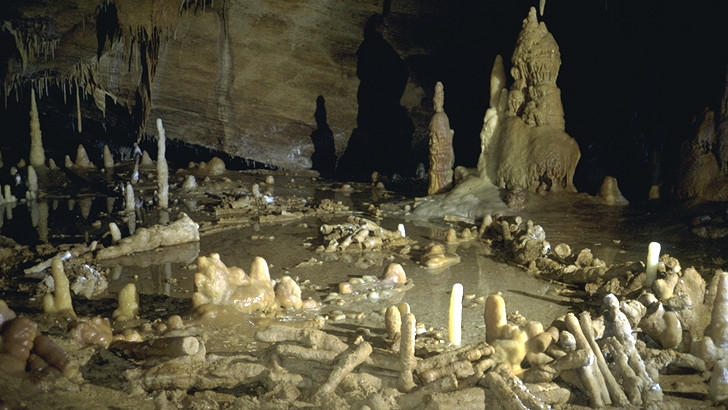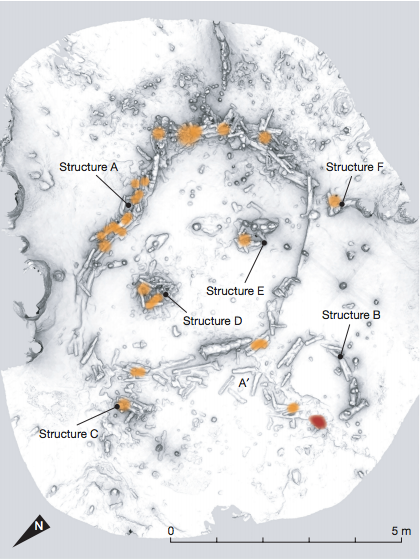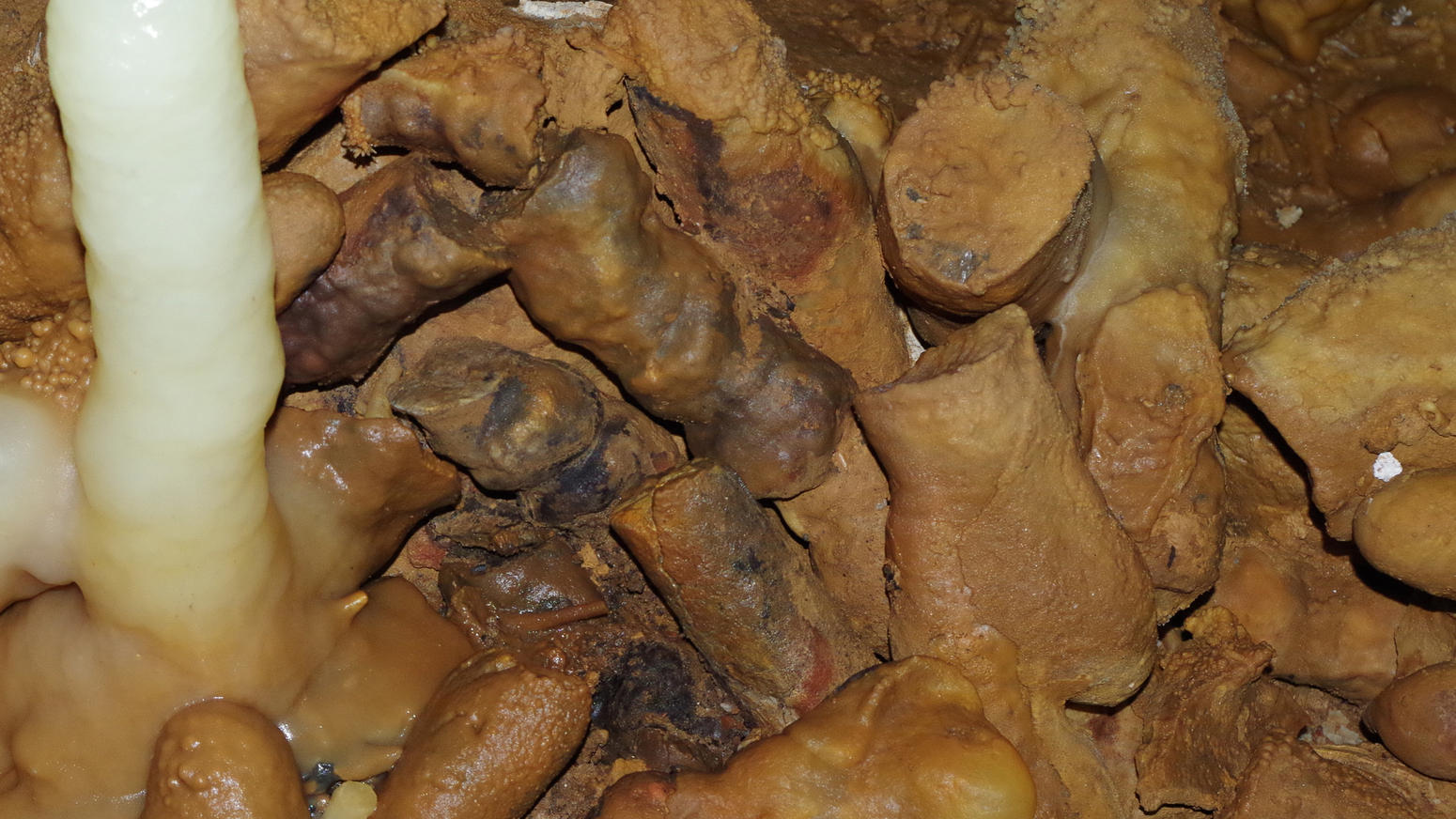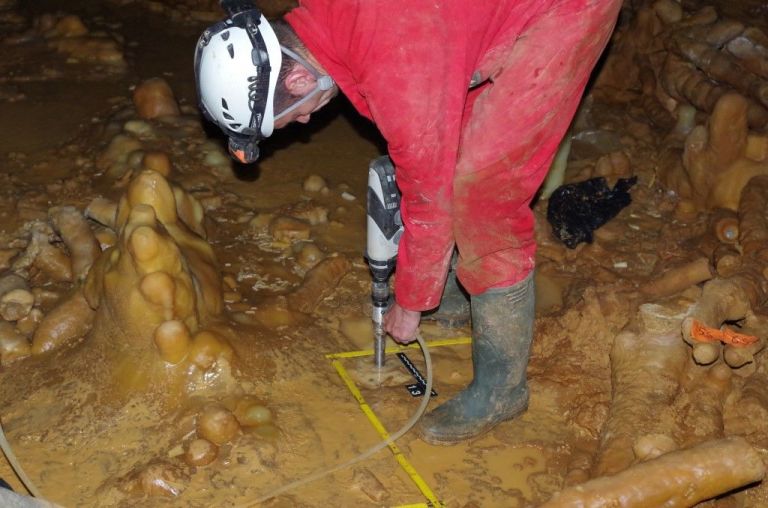The intelligence of Neanderthals, modern humans’ 300,000 year-old ancestors, has been a point of contention since their remains were first discovered nearly 200 years ago.
Since then, we have learnt much about them: they mastered fire, created stunning art, and could manipulate tools. Now, we also know that they were capable of creating vast, intricate structures within subterranean caves.
The discovery was made over 1100 feet within Bruniquel Cave, a structure that was discovered in France back in 1992. It’s only recently that a team of archaeologists, lead by Jacques Jaubert of the University of Bordeaux, have been allowed to enter and commence their research.
More than 400 stalagmites (the mineral formations that rise from the ground in such locations) weighing 2.4 tonnes have been ripped up to create the structure and, interestingly, they all appear to be roughly the same dimensions.
The orange marks in the image above show where researchers found burn marks, suggesting that the rings were lined with fire. The red zone is a severely charred area in which they found burnt bone fragments.
Was the space designed for use in some kind of ritual? It’s unclear – and, in fact, contrasts with what little we already know about Neanderthal tradition – but for Jaubert, one thing is certain. “Building these structures was a project. It required an objective which has been discussed among several people and enough social organisation to assign tasks.”
The cave is one more cryptic piece of the puzzle that may reveal the truth about our Eurasian relatives, and what caused them to become extinct 30 – 40,000 years ago.
Released yesterday by Nature, the team’s full findings can be read in a study published here.




